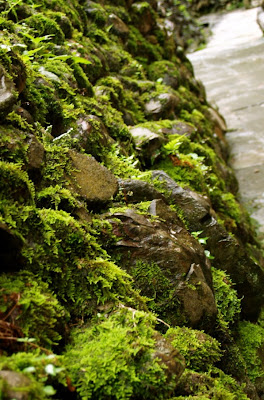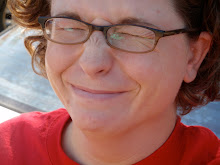
By definition, a Karst is a limestone mountain, which is a completely uninspiring way to describe this natural phenomenon. In reality, Karst country is as majestic as the Himalayas, the Saharah Desert and Niagra Falls combined, they’re the reason to visit China!

The tour bus drove through some pristine countryside, and try as I might, the Chinese explanations, near-death bus routes and severe lack of sleep, lulled me into a deep slumber. But once we reached the Yao Village, I was up for the count!
The Yao Village is also referred to as the Long-hair Village. According to local tradition, the women cut their hair only once in their lives, at age 16, and quickly marry afterwards. Their hair is kept like a headpiece, which is twisted into a few different do’s, depending on their social status. There are different hairstyles for single ladies, married ladies, and mothers, though as an outsider, we can’t view the hair of single women since it’s inappropriate to show anyone before she reveals it to her future husband.

 The village is very traditional, and reminded me of our Native American Tribes, prizing themselves on hand-crafted goods and singing and dancing. The women are the authorities of the village, and it’s the role of the man to raise the children while the women sew and harvest the rice. But admittedly, when hordes of tourists come by the busload, the women follow these deep-pocket sightseers, such as myself, and try to peddle a variety of goods while speaking broken English. If it weren’t for this unpleasant barrage of merchants, I would have enjoyed my time here infinitely more.
The village is very traditional, and reminded me of our Native American Tribes, prizing themselves on hand-crafted goods and singing and dancing. The women are the authorities of the village, and it’s the role of the man to raise the children while the women sew and harvest the rice. But admittedly, when hordes of tourists come by the busload, the women follow these deep-pocket sightseers, such as myself, and try to peddle a variety of goods while speaking broken English. If it weren’t for this unpleasant barrage of merchants, I would have enjoyed my time here infinitely more.



 If you know what terraced rice fields are, then you were way ahead of me. Apparently they litter the Asian countryside, but the Longji Terraces are among the most renowned. Simply put, it’s layer upon layer of rice fields, coiling from the base of the mountain to the summit. And it’s pretty amazing! This area has such a narrow span of land to cultivate rice, that the last 700 years have been spent constructing this monument to perseverance.
If you know what terraced rice fields are, then you were way ahead of me. Apparently they litter the Asian countryside, but the Longji Terraces are among the most renowned. Simply put, it’s layer upon layer of rice fields, coiling from the base of the mountain to the summit. And it’s pretty amazing! This area has such a narrow span of land to cultivate rice, that the last 700 years have been spent constructing this monument to perseverance.

 The Longji Terrace is also known as the Dragon’s Backbone. There’s a saying, ‘where there’s soil, there is a terrace,’ and after driving throughout them for hours, I can definitely agree with that sentiment. Each season brings about a distinctive change in landscape. In the spring, water is irrigated to the fields and floods each terrace, making it look like ribbons of water cutting through the mountain. The summer brings green fields that flow into each other, but the real treat is in the autumn, when the rice is in harvest and the fields are rich with a golden hue.
The Longji Terrace is also known as the Dragon’s Backbone. There’s a saying, ‘where there’s soil, there is a terrace,’ and after driving throughout them for hours, I can definitely agree with that sentiment. Each season brings about a distinctive change in landscape. In the spring, water is irrigated to the fields and floods each terrace, making it look like ribbons of water cutting through the mountain. The summer brings green fields that flow into each other, but the real treat is in the autumn, when the rice is in harvest and the fields are rich with a golden hue.
Our bus dropped us at the base of the some mountain, I’m not sure the name, but it’s likely to have an ‘x’ and ‘ing’ in the name. We walked up a paved path with about a million stairs, and midway up, had lunch at a local diner. Included on the menu was field mouse and snake, but I opted for the more Western-friendly dish, and got the bamboo steamed chicken and rice. As you can see from my picture, the food was cooked in bamboo shoots that were then hacked open with a machete. Very cool.
After the pep of some much-needed caffeine, I was back on the path. It took about an hour to reach the summit. Along the way I passed shopkeepers and merchants alike, each of whom would have sold me their only daughters if I had proffered an offer. But I was on a mission, and aside from an occasional picture, I wouldn’t even let thirst deter me. Finally, huffing and puffing, I reached the top, to see... fog! All consuming and enveloping fog! Insufferable fog that didn’t care if I captured this accomplishment on my memory card or not! So I while I waited for it to lift, I set up my little tripod and drank some bottled water, and what do you know? The fog lifted just long enough to capture a few images!




 The walk down was a pleasant one, although I was freezing from sweating the entire way up. The bus ride back to the hostel was rather uneventful. At one point, I saw some Chinese people arguing about sitting in the seat that was clearly broken. They notified the tour guide, who walked passed several rows of people to ask me if I would move seats, and sit over there. I still don’t know why he came to me, I wasn’t sitting anywhere near that seat the last time we were on the bus, but I politely refused to move, which I’m pretty sure annoyed him, but seriously, who signs up for that? Yes please, can I make my endless hours of transportation more uncomfortable?
The walk down was a pleasant one, although I was freezing from sweating the entire way up. The bus ride back to the hostel was rather uneventful. At one point, I saw some Chinese people arguing about sitting in the seat that was clearly broken. They notified the tour guide, who walked passed several rows of people to ask me if I would move seats, and sit over there. I still don’t know why he came to me, I wasn’t sitting anywhere near that seat the last time we were on the bus, but I politely refused to move, which I’m pretty sure annoyed him, but seriously, who signs up for that? Yes please, can I make my endless hours of transportation more uncomfortable?














No comments:
Post a Comment